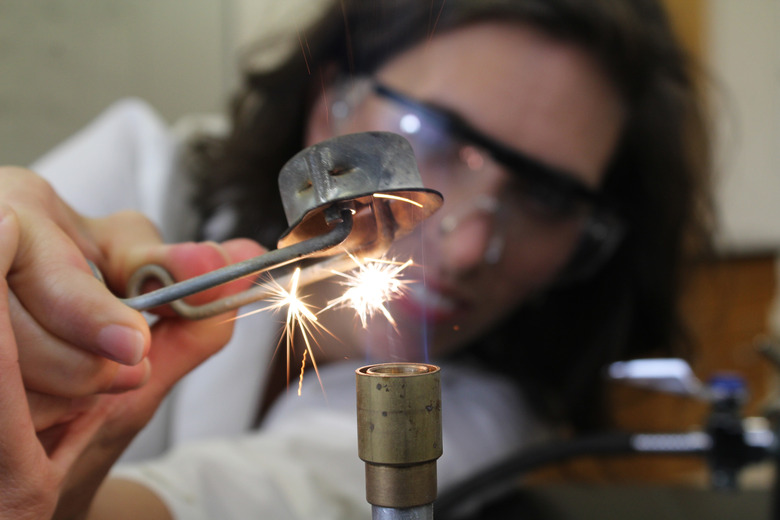What Is The Function Of A Clay Triangle?
A clay triangle is a piece of laboratory equipment used in the process of heating substances. It is used in conjunction with other lab equipment to create a stable framework in which to place a substance — usually a solid chemical — while it is heated to a high temperature.
Definitions
Definitions
A clay triangle is a wire and ceramic triangle used to support a crucible while it is heated over a Bunsen burner. A crucible is a ceramic vessel with a lid that is used to heat solid chemical substances to high temperatures to dry them completely or to induce a reaction without solution.
Description
Description
A clay triangle consists of three lengths of galvanized wire arranged in a triangle shape. The ends of the wires are twisted together, forming three straight wire stems projecting outward from each corner of the triangle. Each side of the wire triangle is covered with a ceramic sleeve, which is capable of withstanding very high temperatures over direct flame from a Bunsen burner.
Use
Use
To use a clay triangle, clamp an iron ring to a ring stand. This creates a framework to hold your apparatus above a Bunsen burner. Place the clay triangle on the iron ring and situate the Bunsen burner underneath it. Put the crucible on the clay triangle. Now you are ready to heat the crucible.
Significance
Significance
The clay triangle serves a similar purpose to a gauze mat, which is used to support a beaker or flask rather than a crucible. Use of clay triangles has decreased in modern laboratories because some scientists now use electric hotplates instead of Bunsen burners. Crucibles, flasks and beakers can be heated directly on a hotplate.
Cite This Article
MLA
Roberts, Anna. "What Is The Function Of A Clay Triangle?" sciencing.com, https://www.sciencing.com/function-clay-triangle-8578080/. 11 June 2011.
APA
Roberts, Anna. (2011, June 11). What Is The Function Of A Clay Triangle?. sciencing.com. Retrieved from https://www.sciencing.com/function-clay-triangle-8578080/
Chicago
Roberts, Anna. What Is The Function Of A Clay Triangle? last modified March 24, 2022. https://www.sciencing.com/function-clay-triangle-8578080/
